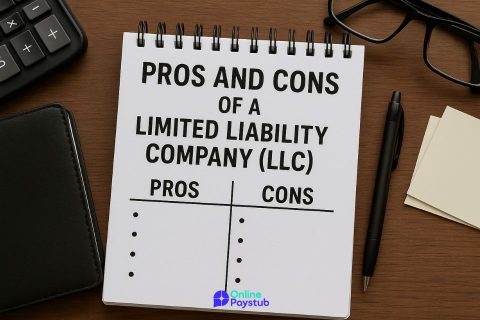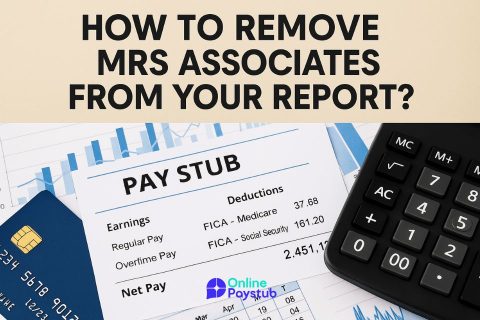Flexible Spending Accounts (FSAs) offer employees a valuable way to save on taxes while covering necessary medical, dental, and dependent care expenses.
In 2025, understanding how FSAs work — and how to maximize their benefits — can significantly improve your financial well-being.
This guide breaks down everything you need to know about FSAs, from basic definitions to practical usage tips.
What Is a Flexible Spending Account (FSA)?
A Flexible Spending Account (FSA) is a special, tax-advantaged savings account set up through your employer.
It allows you to set aside money from your paycheck before taxes are deducted to pay for eligible healthcare or dependent care expenses.
Key characteristics of an FSA:
- Pre-Tax Contributions: Contributions reduce your taxable income.
- Use It or Lose It: Funds generally must be used within the plan year, although some plans offer grace periods or carryover options.
- Employer-Sponsored: FSAs must be established by an employer; self-employed individuals cannot set up their own FSAs.
By lowering your taxable income, an FSA can save you hundreds — or even thousands — of dollars annually.
How an FSA Works and Who Can Benefit
Here’s a simple breakdown of how an FSA typically works:
- Enrollment:
- Employees enroll during their employer’s benefits open enrollment period.
- Employees enroll during their employer’s benefits open enrollment period.
- Contribution:
- You decide how much to contribute for the year, up to the IRS annual limit ($3,200 for healthcare FSAs in 2025, for example).
- You decide how much to contribute for the year, up to the IRS annual limit ($3,200 for healthcare FSAs in 2025, for example).
- Payroll Deductions:
- Contributions are automatically deducted from your paychecks throughout the year.
- Contributions are automatically deducted from your paychecks throughout the year.
- Using FSA Funds:
- Use a provided FSA card or submit reimbursement claims for eligible expenses like copays, prescriptions, childcare costs, and more.
- Use a provided FSA card or submit reimbursement claims for eligible expenses like copays, prescriptions, childcare costs, and more.
- Tax Savings:
- Since contributions are pre-tax, your taxable income — and thus your overall tax bill — is reduced.
- Since contributions are pre-tax, your taxable income — and thus your overall tax bill — is reduced.
Who Benefits Most from FSAs?
- Employees with predictable annual medical or childcare expenses.
- Families looking to reduce taxable income.
- Anyone planning to incur significant out-of-pocket medical costs.
How Does an FSA Account Work for Medical and Healthcare Expenses?
An FSA for medical expenses works in a very straightforward way:
- Eligible Expenses Include:
- Copayments, deductibles, and prescription medications.
- Vision care (glasses, contact lenses, LASIK).
- Dental work (braces, fillings, cleanings).
- Mental health counseling services.
- Copayments, deductibles, and prescription medications.
- FSA Debit Card:
Many plans provide a debit card that lets you pay for eligible expenses directly from your FSA balance, avoiding the need for reimbursement paperwork. - Documentation Requirements:
Keep all receipts and explanation of benefits (EOB) statements — your employer or FSA administrator may request proof that an expense was eligible. - Timing Matters:
You can generally use FSA funds for expenses incurred during the plan year (plus any allowed grace period or carryover).
FSAs are especially helpful for families or individuals who expect significant healthcare costs during the year.
Different Types of FSAs: Which One Is Right for You?
There are several types of FSAs available, depending on your needs:
- Health Care FSA:
Covers a wide range of medical, dental, and vision expenses. Most common type. - Limited Purpose FSA:
Available only if you have a Health Savings Account (HSA).
Covers dental and vision expenses exclusively. - Dependent Care FSA:
Helps pay for childcare expenses for children under 13 or care for disabled dependents while you work. - Post-Deductible FSA:
Designed for those with a high-deductible health plan (HDHP) — can be used for all eligible expenses after you meet your deductible.
Choosing the right type of FSA depends on your healthcare needs, family situation, and other benefits you may have, like an HSA.
FSA Eligible Expenses: What You Can Pay For
Flexible Spending Accounts can be used to cover a wide range of qualified expenses.
Eligible items typically include:
- Medical Expenses:
- Doctor visits, specialist consultations, hospital fees.
- Prescription medications and vaccines.
- Medical equipment like crutches, blood pressure monitors.
- Doctor visits, specialist consultations, hospital fees.
- Dental Care:
- Cleanings, fillings, braces, dentures.
- Cleanings, fillings, braces, dentures.
- Vision Care:
- Glasses, contact lenses, LASIK surgery, eye exams.
- Glasses, contact lenses, LASIK surgery, eye exams.
- Mental Health Services:
- Counseling and psychiatric care.
- Counseling and psychiatric care.
- Over-the-Counter Items:
- Bandages, thermometers, pregnancy tests (some without a prescription).
- Bandages, thermometers, pregnancy tests (some without a prescription).
Note: Cosmetic procedures, teeth whitening, and non-medical supplements are generally not eligible.
Always check your plan’s list or consult your FSA administrator if unsure about a specific expense.
Important FSA Rules: “Use It or Lose It” Explained
One of the most critical FSA rules is the “Use It or Lose It” policy:
- Basic Rule:
You must spend the funds in your FSA by the end of the plan year, or you lose the remaining balance. - Exceptions:
Some employers offer flexibility:
- Grace Period: Up to 2.5 extra months (usually until March 15 of the following year) to use your funds.
- Carryover Option: You may carry over a limited amount (up to $640 in 2025) into the next plan year.
- Grace Period: Up to 2.5 extra months (usually until March 15 of the following year) to use your funds.
Employers can offer one of these options — but not both.
Check your specific FSA plan rules to avoid losing unspent funds.
FSA Contribution Limits, Grace Periods, and Carryovers in 2025
For 2025, the IRS has set the following contribution limits and rules:
- Healthcare FSA Limit:
- Up to $3,200 per employee for health care expenses.
- Up to $3,200 per employee for health care expenses.
- Dependent Care FSA Limit:
- Up to $5,000 per household (or $2,500 if married filing separately).
- Up to $5,000 per household (or $2,500 if married filing separately).
- Carryover Limit:
- Up to $640 of unused Healthcare FSA funds can be carried into 2026 if your employer allows.
- Up to $640 of unused Healthcare FSA funds can be carried into 2026 if your employer allows.
- Grace Periods:
- Some plans give you until March 15, 2026, to use any leftover 2025 funds.
- Some plans give you until March 15, 2026, to use any leftover 2025 funds.
Understanding these limits helps you plan your contributions wisely and maximize the tax benefits.
FSA vs. HSA: Key Differences Explained
Although both FSAs and HSAs offer tax advantages for medical expenses, they work differently:
| Feature | FSA | HSA |
| Ownership | Owned by employer | Owned by individual |
| Eligibility | Anyone with employer-offered FSA | Must have a High Deductible Health Plan (HDHP) |
| Contribution Limit (2025) | $3,200 (Healthcare FSA) | $4,150 (individual) / $8,300 (family) |
| Carryover/Grace Period | Limited ($640 carryover or grace period) | Funds roll over indefinitely |
| Portability | Lost if you leave employer | Stays with you even after job changes |
In short:
- Choose an FSA if you want immediate tax savings on predictable healthcare expenses.
- Choose an HSA if you want long-term savings, investment options, and rollover benefits.
How to Maximize Your FSA Benefits
To get the most out of your FSA:
- Estimate Carefully:
Predict your yearly medical and dependent care costs to avoid overcontributing. - Track Expenses Early:
Save receipts and use your FSA card when eligible to avoid reimbursement delays. - Plan End-of-Year Spending:
If you have leftover funds, use them for eligible purchases like eyeglasses, dental work, or preventive care. - Stay Updated:
IRS rules and eligible expenses can change — review your plan documents annually. - Use Grace Periods or Carryover Wisely:
Know your plan’s options for using unspent funds and plan accordingly.
Smart planning ensures you don’t leave money on the table and fully enjoy your FSA’s tax benefits.




No comments to show.